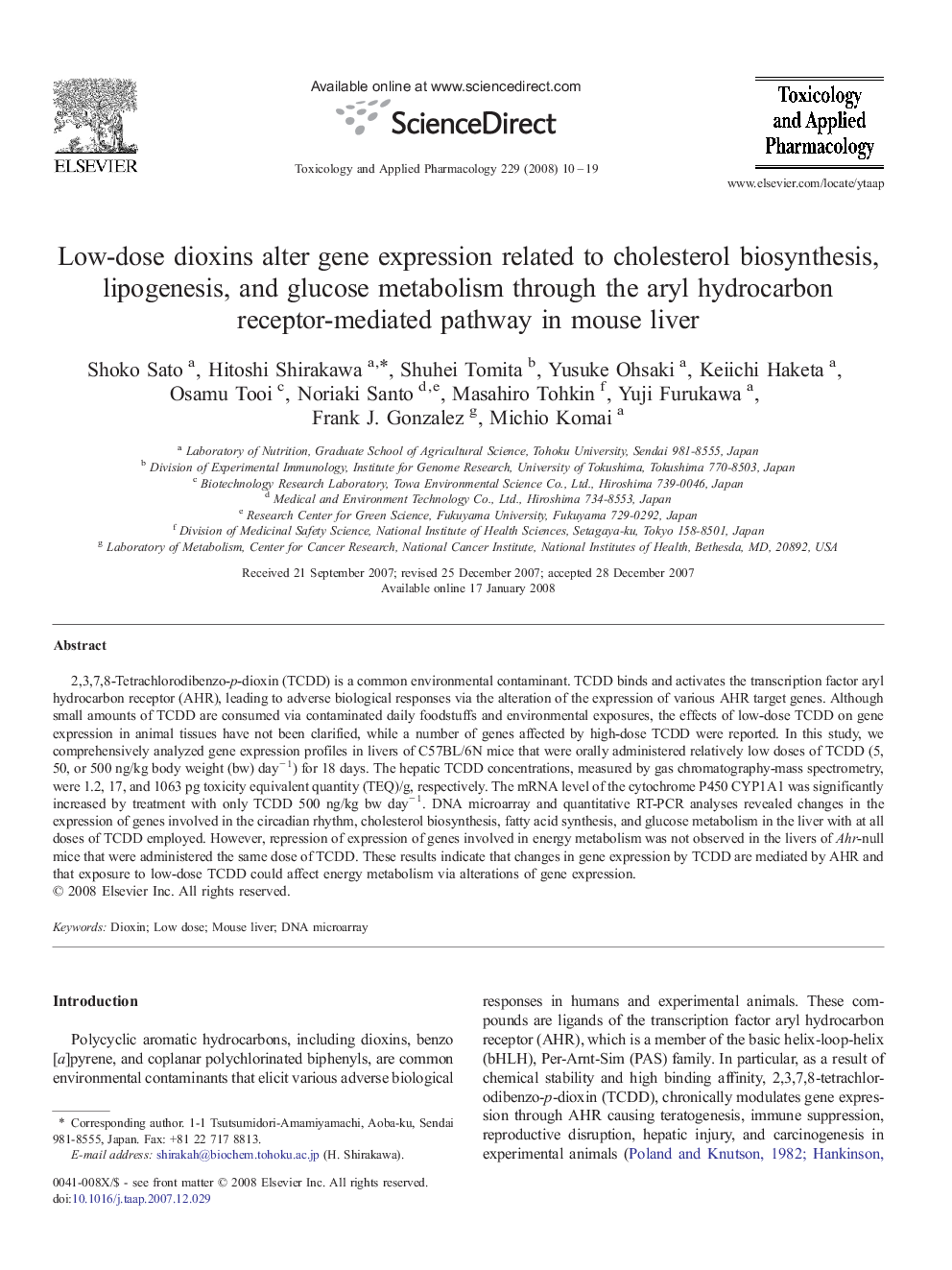| Article ID | Journal | Published Year | Pages | File Type |
|---|---|---|---|---|
| 2571439 | Toxicology and Applied Pharmacology | 2008 | 10 Pages |
2,3,7,8-Tetrachlorodibenzo-p-dioxin (TCDD) is a common environmental contaminant. TCDD binds and activates the transcription factor aryl hydrocarbon receptor (AHR), leading to adverse biological responses via the alteration of the expression of various AHR target genes. Although small amounts of TCDD are consumed via contaminated daily foodstuffs and environmental exposures, the effects of low-dose TCDD on gene expression in animal tissues have not been clarified, while a number of genes affected by high-dose TCDD were reported. In this study, we comprehensively analyzed gene expression profiles in livers of C57BL/6N mice that were orally administered relatively low doses of TCDD (5, 50, or 500 ng/kg body weight (bw) day− 1) for 18 days. The hepatic TCDD concentrations, measured by gas chromatography-mass spectrometry, were 1.2, 17, and 1063 pg toxicity equivalent quantity (TEQ)/g, respectively. The mRNA level of the cytochrome P450 CYP1A1 was significantly increased by treatment with only TCDD 500 ng/kg bw day− 1. DNA microarray and quantitative RT-PCR analyses revealed changes in the expression of genes involved in the circadian rhythm, cholesterol biosynthesis, fatty acid synthesis, and glucose metabolism in the liver with at all doses of TCDD employed. However, repression of expression of genes involved in energy metabolism was not observed in the livers of Ahr-null mice that were administered the same dose of TCDD. These results indicate that changes in gene expression by TCDD are mediated by AHR and that exposure to low-dose TCDD could affect energy metabolism via alterations of gene expression.
